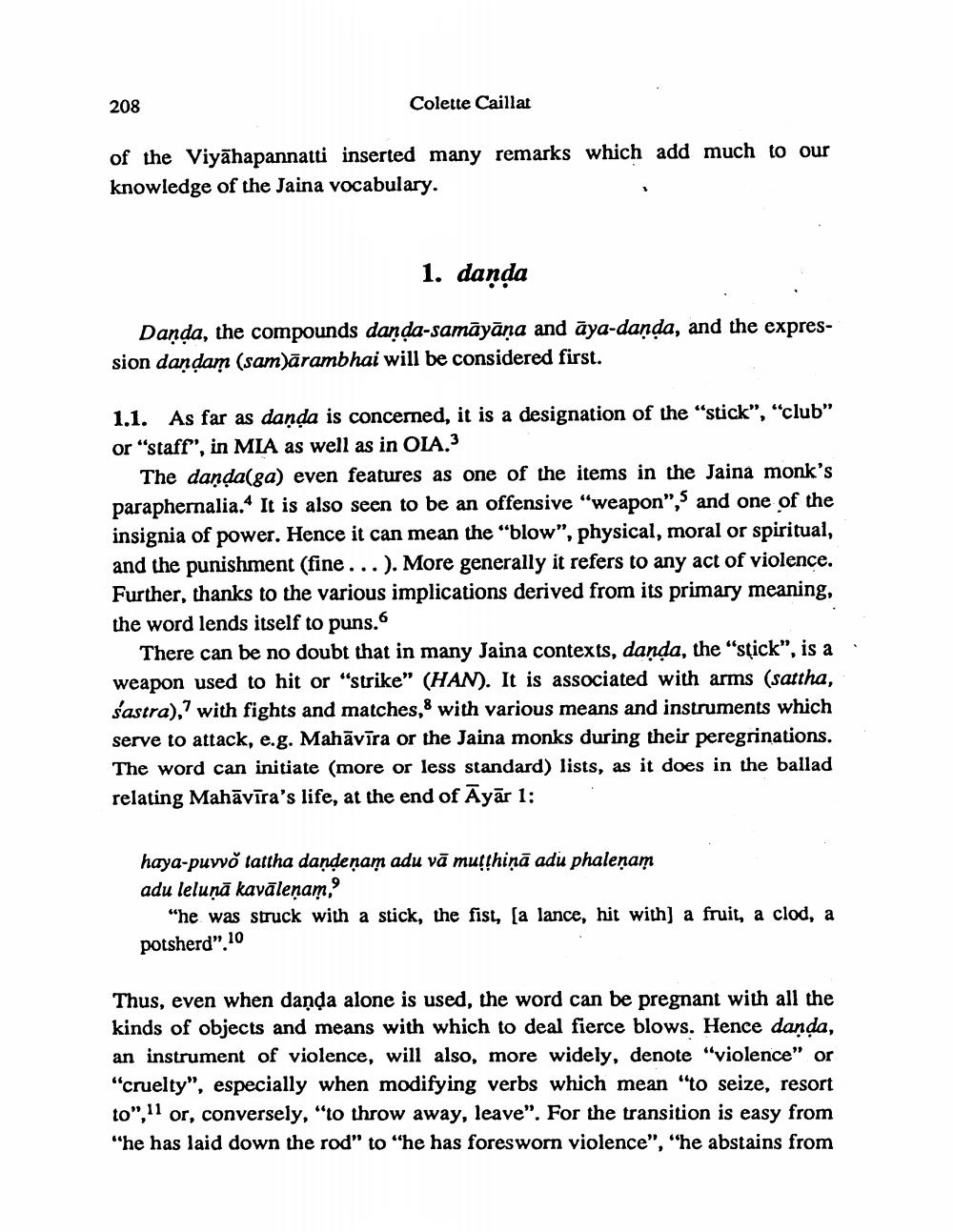________________
208
Colette Caillat
of the Viyāhapannatti inserted many remarks which add much to our knowledge of the Jaina vocabulary.
1. danda
Danda, the compounds danda-samāyāna and āya-danda, and the expression dandam (sambärambhai will be considered first.
1.1. As far as danda is concerned, it is a designation of the "stick", "club" or "staff", in MIA as well as in OIA.3
The danda(ga) even features as one of the items in the Jaina monk's paraphernalia. It is also seen to be an offensive "weapon", and one of the insignia of power. Hence it can mean the "blow", physical, moral or spiritual, and the punishment (fine...). More generally it refers to any act of violence. Further, thanks to the various implications derived from its primary meaning, the word lends itself to puns.
There can be no doubt that in many Jaina contexts, danda, the "stick", is a weapon used to hit or "strike” (HAN). It is associated with arms (sattha, sastra), with fights and matches, with various means and instruments which serve to attack, e.g. Mahāvīra or the Jaina monks during their peregrinations. The word can initiate (more or less standard) lists, as it does in the ballad relating Mahāvīra's life, at the end of Āyār 1:
haya-puvvõ tattha dandeņam adu vā mutthiņā adu phalenam adu lelunā kavālenam,
"he was struck with a stick, the fist, (a lance, hit with) a fruit, a clod, a
potsherd”. 10
Thus, even when danda alone is used, the word can be pregnant with all the kinds of objects and means with which to deal fierce blows. Hence danda, an instrument of violence, will also, more widely, denote "violence" or “cruelty", especially when modifying verbs which mean "to seize, resort to", 11 or, conversely, "to throw away, leave". For the transition is easy from "he has laid down the rod" to "he has foresworn violence", "he abstains from




